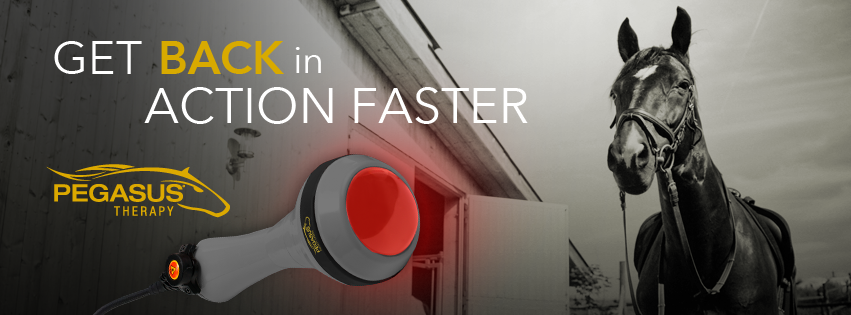Examining the Efficiency of Laser Treatment in Equine Therapy for Injury Rehabilitation
The assessment of laser treatment's effectiveness in equine injury recovery hinges on numerous aspects, consisting of recuperation time, discomfort mitigation, and cells regrowth. Vets often observe exceptional results with laser treatment compared to conventional methods, positioning it as an important component in equine care.
Understanding Laser Treatment
Laser treatment has come to be a crucial device in vet medication, especially in the treatment of equine conditions. Understood for its non-invasive nature and efficiency, laser therapy involves the application of specific wavelengths of light to stimulate tissue repair work and reduce swelling. This healing modality is significantly favored for its ability to accelerate the healing procedure in equines struggling with a range of musculoskeletal injuries and persistent conditions.
The primary system behind laser treatment is its capacity to boost cellular features. When laser light passes through the skin, it is absorbed by mitochondria, the powerhouse of cells, which results in raised production of adenosine triphosphate (ATP) This biochemical power increase facilitates cellular repair service and regeneration. Furthermore, laser treatment promotes vasodilation, boosting blood circulation and oxygen delivery to damaged tissues, therefore quickening recuperation.
In equine medication, laser treatment is particularly advantageous for problems such as tendonitis, osteoarthritis, and wound healing. The method is lauded for its pain-relieving properties, allowing horses to regain mobility and feature a lot more rapidly. Veterinarians also value its very little adverse effects contrasted to various other therapy techniques, making it a trustworthy and safe choice for equine care.

Just How Laser Treatment Works

Upon absorption, these photons trigger a collection of biochemical adjustments, improving mitochondrial feature and resulting in raised adenosine triphosphate (ATP) manufacturing. This increase in ATP accelerates cellular metabolic process, promoting cells fixing and regeneration. In addition, laser treatment regulates inflammatory reactions by affecting cytokine levels and lowering oxidative anxiety, thereby reducing discomfort and swelling.
An additional substantial facet of laser therapy is its function in improving microcirculation. The treatment promotes vasodilation, improving blood circulation and oxygen delivery to damaged cells (Equine Therapy). This facilitates the removal of cellular particles and sustains the spreading of fibroblasts and collagen synthesis, essential for wound recovery
Medical Proof
The effectiveness of laser therapy in equine treatment has been validated through various clinical studies, showcasing its healing possible throughout a variety of problems. Numerous controlled trials and empirical research studies have recorded considerable enhancements in cells repair, pain decrease, and overall rehabilitation timelines. For circumstances, a research study conducted by Turner et al. (2012) demonstrated that equines treated with low-level laser therapy (LLLT) for ligament injuries displayed sped up recovery contrasted to those getting conventional treatments. The research highlighted a significant decrease in inflammation and enhanced collagen formation.
Likewise, research by Johnson and associates (2015) focused on equine muscle mass injuries, disclosing that laser treatment dramatically accelerated muscular tissue fiber regeneration and decreased muscular tissue tightness. These findings were proven by histological analyses showing better muscle cells organization. Scientific assessments have revealed that laser therapy can minimize chronic conditions such as osteoarthritis. A research study by Smith et al. (2018) reported that horses with osteoarthritic joints experienced noteworthy pain alleviation and boosted range of movement following a program of laser therapy sessions.
Veterinarian Insights

Veterinarians likewise value the versatility of laser therapy. She points out that laser treatment can be tailored to the details demands of each horse, ensuring ideal results.
Moreover, vets value the capability to incorporate laser therapy with various other treatment techniques. This multimodal technique can boost overall treatment efficacy, providing a comprehensive solution for equine rehab. Such recommendations from experienced specialists underscore the expanding approval and application of laser therapy in equine medication.
Practical Considerations
A crucial facet of executing laser treatment in equine therapy involves comprehending the practical considerations that ensure its efficacy and security. It is vital to choose the proper laser gadget, as numerous kinds differ in wavelength, power, and infiltration depth. Vets need to be fluent in these criteria to customize therapy methods efficiently to each injury kind
Furthermore, the regularity and duration of laser therapy sessions need careful planning to take full advantage of restorative advantages while decreasing any prospective damaging impacts. Regular monitoring of the steed's action to therapy can lead required modifications in the therapy program. Developing a safe and regulated environment during therapies is additionally necessary to stop unexpected direct exposure to laser emissions, which could harm both the steed and the handler.
Training and accreditation of workers administering laser therapy are vital to ensure proper strategy and to support safety requirements. In addition, maintaining exact documents of each session, consisting of laser settings and observed outcomes, is essential for assessing the overall performance of the therapy and for making data-driven decisions.
Conclusion
Laser therapy has become an efficient method in equine injury rehabilitation, offering significant advantages in recovery time, discomfort alleviation, and tissue recovery. Scientific researches underscore substantial enhancements in problems such as tendonitis and osteoarthritis, credited to enhanced mobile feature and enhanced ATP manufacturing. Veterinarian monitorings substantiate these findings, highlighting superior results contrasted to typical article therapies. For optimum outcomes, constant surveillance and customized treatment protocols continue to be important in leveraging the full potential of laser treatment in equine treatment.